
Types of containers at a glance: What are the different types of container?
Since the onset of globalisation, international ports and their appearance has changed steadily. Today, large cargo ships, crane bridges, and containers are integral to the harbour landscape - the presence of containers, in particular, has increased dramatically. While container ships could transport about 11 million tonnes in 1980, by 2022, their capacity had grown to approximately 293 million tonnes.

General information about containers
Containers primarily serve the transport of goods of all kinds. The term "container" is derived from the Latin word "continere," which means to hold together and preserve. This lexical meaning is directly related to their use, as containers are mainly employed in the logistics industry to transform diverse goods of various shapes, sizes, and quantities into a homogeneous, transportable form. Containers are versatile and can be used for transporting goods by air, road, and sea. Since the mid-1950s, they have been integral to international trade. By 2015, global container transport had surged to approximately 136 million units. Overall, 90 percent of global trade is conducted via sea, making containers essential components of foreign trade.
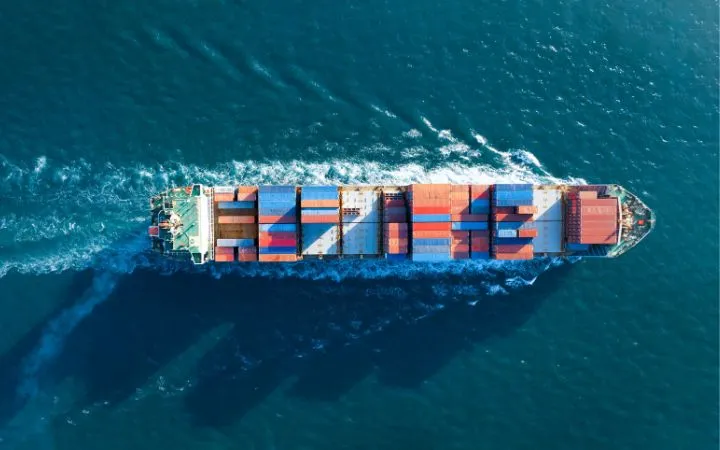
Definition: What is a container?
The diverse uses of containers are made possible by their standardisation. The ISO (International Organization for Standardisation) has established standards for containers, particularly for maritime shipping, with the precise definition provided in ISO 830.
Containers are large-volume structures, typically made of steel, and come in standardised dimensions. Their stackability enables the efficient transport of goods, regardless of their shape or quantity, across various modes of transport. Additionally, containers are suitable for the storage of goods.
Containers can be used by both individuals and businesses for various purposes, including waste disposal, moving, clearing out a household, or storage. Local container service providers offer containers for rent, starting from €150.
When renting or purchasing a container, the type and size you require will significantly influence the cost. Prices for buying a container typically start between €1,000 and €1,500.

Produktberaterin Versandkartons
Ob einfacher Faltkarton oder Maxibriefkarton mit Klebestreifen – ich bin Ihre Beraterin für Versandkartons aus Wellpappe. Unsere bedruckten Verpackungen und Inlays bieten Schutz für Produkte aus fast allen Branchen.
“Sicherheit und Design? Mit Wellpappe geht beides!”
Ich helfe Ihnen bei allen Fragen zu unseren Versandkartons.
The different types of containers
Containers can be classified based on various criteria. In the following graphic, you will see the distinction between containers used in land and air transport at the top level. In air transport, particularly sensitive goods and express deliveries are transported. This may include food, animals, plants, hazardous materials, and humanitarian aid. Air transport containers are typically made of plastic or aluminium to minimise weight.
The majority of exported goods are transported by sea, road, or rail. In this context, a distinction is made between general cargo containers and special cargo containers. General cargo containers are the most well-known and widely used ISO containers.
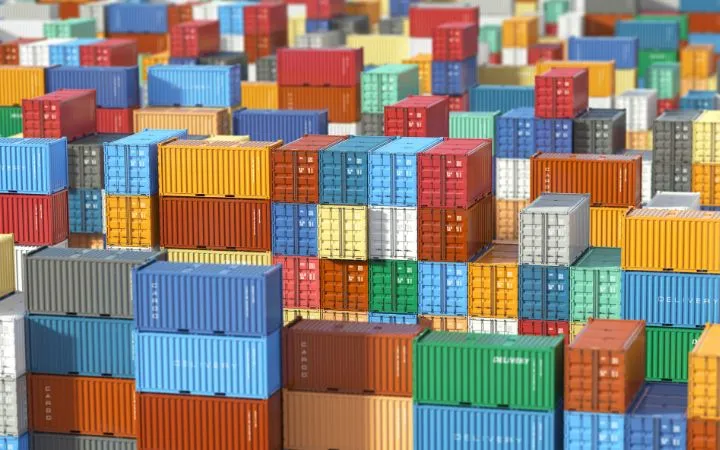
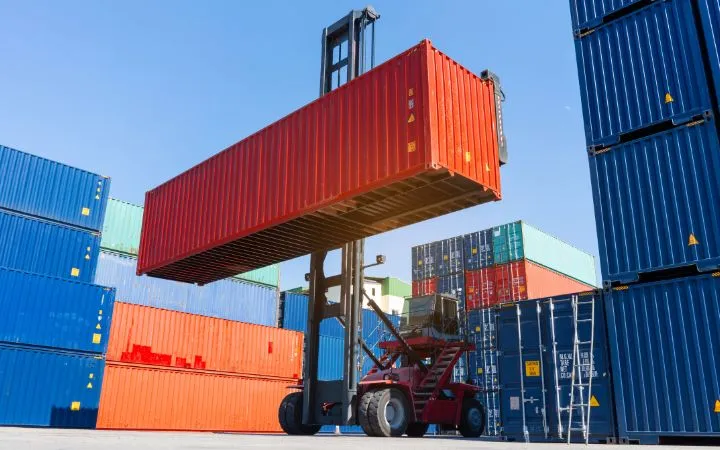
ISO container and high cube container
ISO containers are recognized worldwide as those that comply with the ISO 830 standard and meet the following criteria:
- A durable transport container designed for long-term use
- A container that facilitates the transport of goods across multiple modes without the need for repacking
- A construction and design that allows for easy loading and unloading of goods
- A minimum internal volume of at least one cubic metre
Neben der begrifflichen Definition werden ISO-Container auch durch ganz detaillierte Maße definiert. Unterschieden wird dabei in 20 und 40-Fuß-Container. Außerdem gibt es die sogenannten High-Cube Container (HC) mit 45-Fuß Länge.
| Cell | 20 feet container | 40 feet container | High Cube Container |
| External dimensions in m | 6,06 x 2,44 x 2,59 | 12,19 x 2,44 x 2,59 | 13,72 x 2,44 x 2,90 |
| Interior dimensions in m | 5,90 x 2,35 x 2,39 | 12,03 x 2,35 x 2,39 | 12,56 x 2,35 x 2,70 |
| Innenfläche Interior area volume | 13,9 m² 33,1 m³ | 28,3 m² 67,5 m³ | 31,8 m² 85 m³ |
| Tare weight Maximum total weight | 2,33 t 24,0 t | 4,0 t 30,48 t | 4,8 t 30,48 t |
| Capacity for Euro-palettes | 11 palettes | 25 palettes | 27 palettes |
In logistics communications, the units TEU and FEU are frequently used:
- TEU (Twenty Foot Equivalent Unit): This abbreviation refers to a 20-foot container.
- FEU (Forty Foot Equivalent Unit): This corresponds to a 40-foot container, which is equivalent to two 20-foot containers.
- A high cube container represents 2.25 TEU.
These abbreviations are widely used in logistics to facilitate quick and clear communication regarding loading volumes. Thanks to their corrugated surface, containers can be easily stacked, optimising the use of every square metre.
How ISO and high cube containers differ
Compared to ISO containers, high cube containers are approximately 30 cm taller and 150 cm longer. As a result, they offer greater capacity than standard containers, although their construction remains largely similar. High cube containers often feature gooseneck tunnels at the bottom, which are recesses that allow for better transport on roads and railways by enabling the containers to sit lower.
High cube containers are used in the same areas as ISO containers and are particularly suitable for transporting machinery and larger individual parts, providing greater flexibility. By utilizing high cube containers, up to six additional pallets can be fitted in a single transport route, making them both practical and more economical.
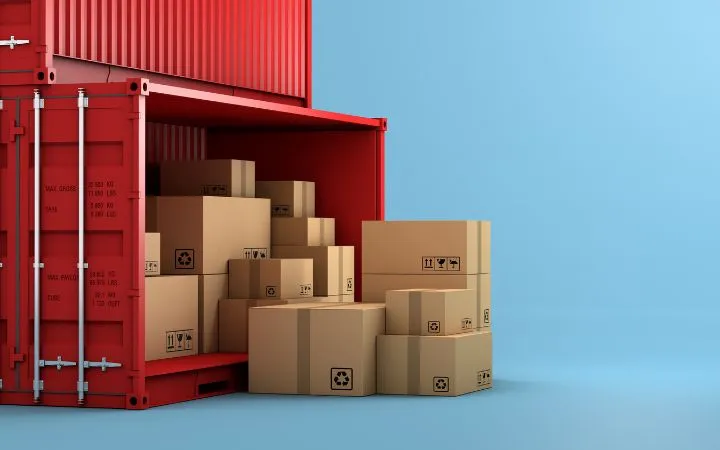
The standardisation of containers offers several significant advantages. Goods are typically transported on standardised Euro-palettes, enabling precise planning of load quantities, which usually remain consistent. Additionally, transport modes can be utilized flexibly, allowing for variations as needed.
A container terminal is a logistics facility where containers are transferred between different modes of transport, such as from a ship to a truck or from a ship to a railway wagon. These logistical hubs play a crucial role in international trade by enabling transloading, consolidation, and temporary storage of containers.
In addition to maritime-to-terrestrial transfers (from boat to truck or train), some terminals specialise in truck-to-train exchanges, facilitating long-distance rail transport. Before leaving a terminal, a container may be subject to a customs inspection, especially when passing through different jurisdictions.
Other types of containers
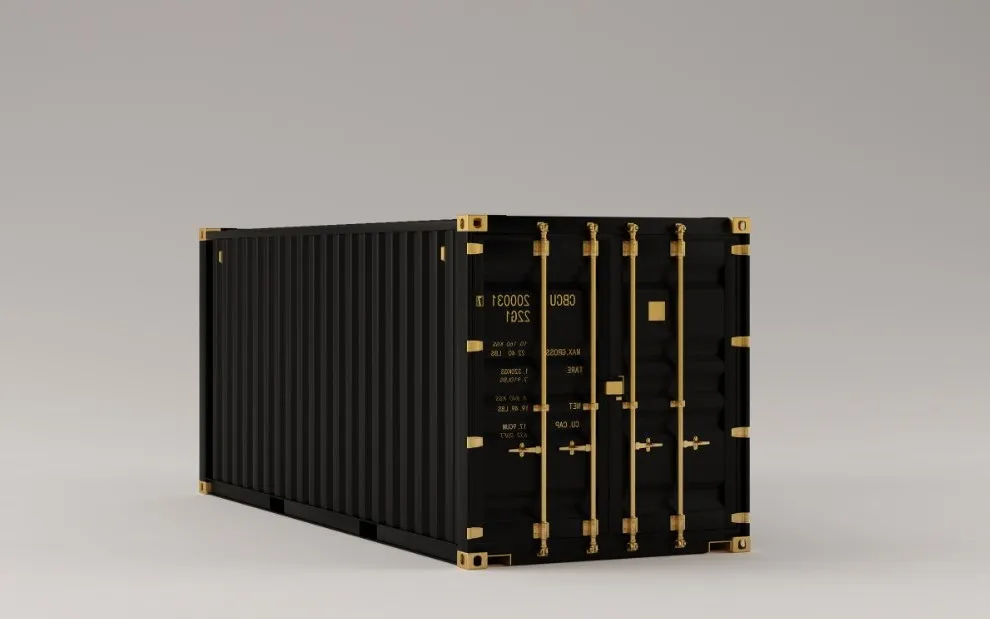
Hardtop container:
The hardtop container is characterised by its detachable metal roof, allowing for loading and unloading through the roof with a crane, forklift, or similar equipment. It is particularly well-suited for the transport and storage of bulky and general cargo, as the roof can typically be stored inside the container.
However, it is essential to ensure proper securing of the cargo and compliance with legal regulations for road and rail transport. Hardtop containers can be used for both overseas transport and storage.
Opentop container:
Unlike the hardtop container, the opentop container features a tarp instead of a metal roof, allowing for the transportation of taller cargo. The tarp provides added flexibility and protects the contents from environmental influences in various weather conditions.
Since both hardtop and opentop containers can be loaded and unloaded from the top, the space near the side doors can be optimally utilised. This space would otherwise need to remain clear to avoid obstructing access to the openings.
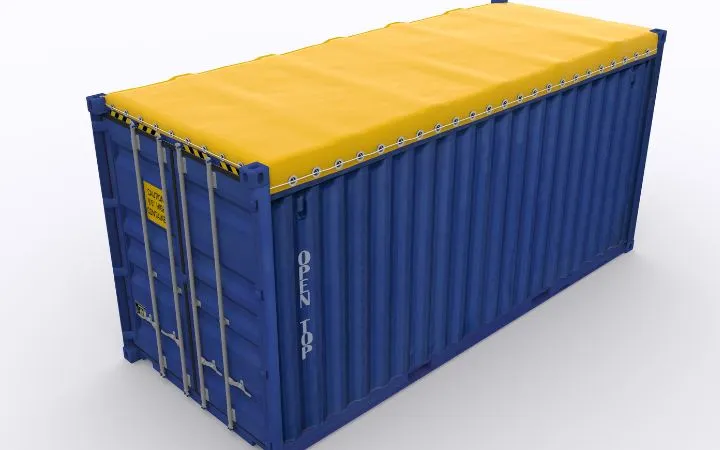
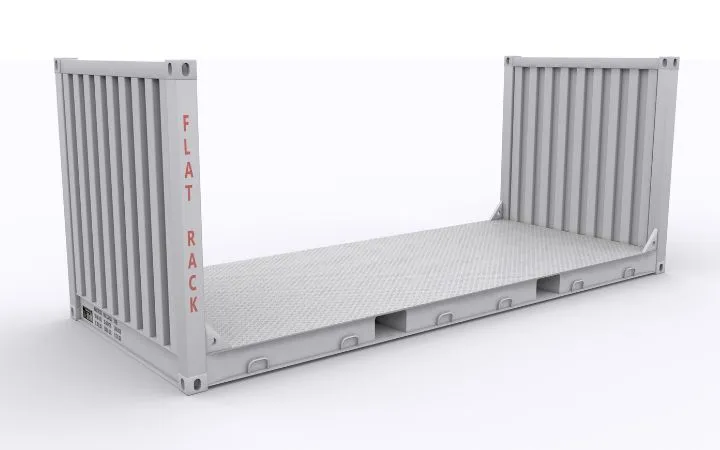
Flat rack container:
The flat rack container does not have a roof or side walls, with load securing accomplished exclusively via the front and back walls of the container. Additionally, the flat rack container features a very stable base, which makes it particularly suitable for transporting heavy cargo. For instance, large machines and equipment are often transported using flatrack containers.
Platform container
The platform container consists solely of the base plate of a container and is specifically designed for transporting machinery. It features a reinforced floor and a gooseneck tunnel, which facilitate transport on truck trailers, ships, or railway wagons.
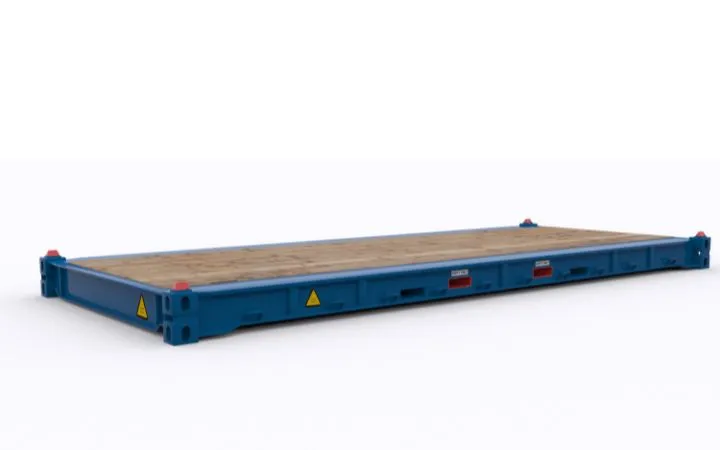
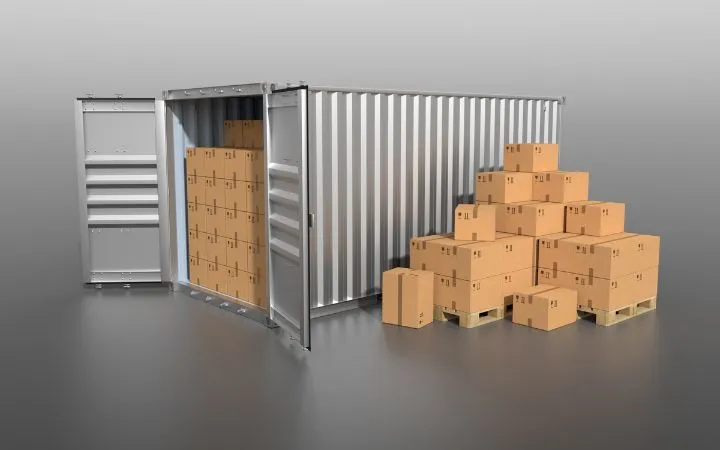
Refrigerated and insulated containers
A distinction is made between integral containers and porthole containers. Integral containers are equipped with an active refrigeration unit installed inside, which slightly reduces their loading capacity. Porthole containers have insulated walls and rely on external cooling systems: cold air is drawn in through openings, while warm air is expelled upwards. This ensures a consistently low temperature inside the container. Refrigerated containers are suitable for transporting perishable goods such as fruit, vegetables, meat, and also plants. Their external dimensions correspond to those of standard or high-cube containers.
Ventilated containers
Ventilated containers can be divided into actively and passively ventilated types. Actively ventilated containers, often simply referred to as ventilated containers, are equipped with valves on the front that allow the supply of oxygen. Passively ventilated containers also feature air vents but include an additional protective device to prevent water ingress. These containers have standard dimensions and are commonly used for transporting goods such as coffee.
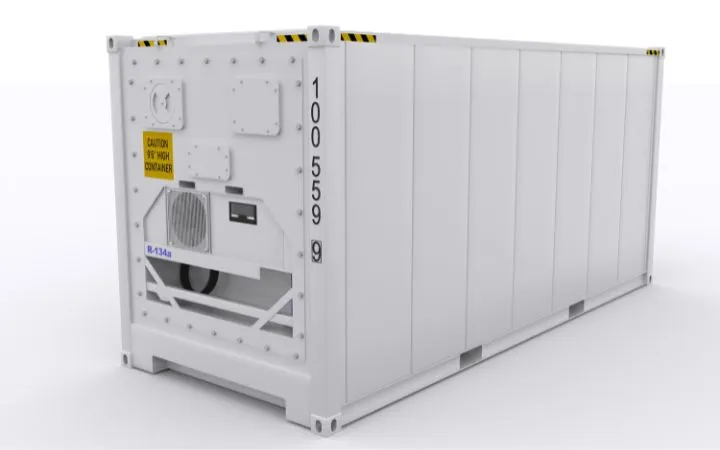
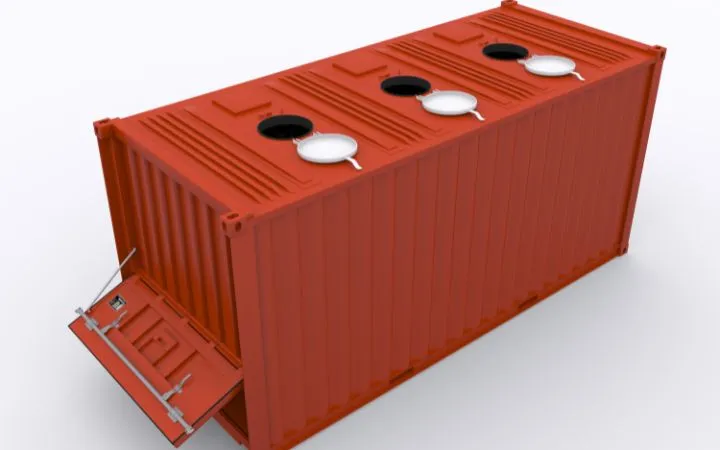
Bulk and bulk cargo containers
Bulk containers are specifically designed for transporting bulk goods such as grain, fertilisers, sand, or gravel. They feature openings on the top for easy loading and often include a mechanism that allows the container to be tilted for fast and efficient unloading. This type of container is particularly popular in the agricultural sector and among industries that handle large quantities of raw materials.
Tank containers
Unlike bulk containers, which transport solid materials in bulk, the tank container is designed to transport liquids such as milk, edible oils or fuels. It contains a tank fixed inside a steel frame, offering structural protection without the need for external walls. Some models are equipped with temperature control devices for sensitive products.
Compared to traditional tankers, this type of container allows faster loading and unloading and greater logistical flexibility.
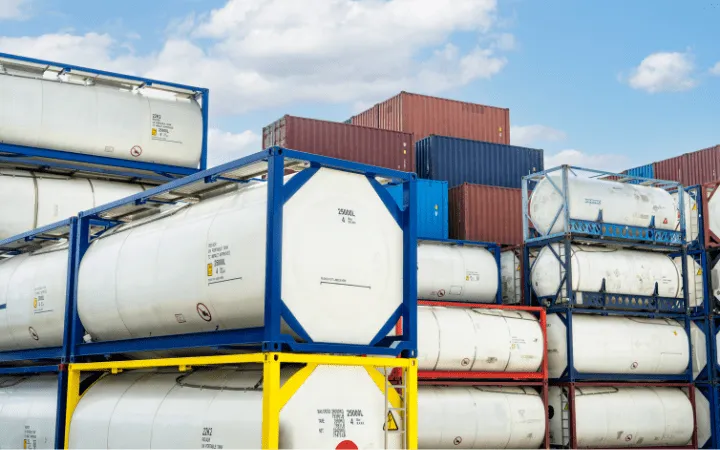
Current container trends
Development of the global container throughput index from 2015 to 2024
The container throughput index is calculated monthly and is based on data from 92 international ports. This index represents approximately 64% of global container throughput and serves as a key indicator for assessing the current state of world trade.
The accompanying graphic shows throughput figures since 2007, revealing a clear positive trend despite some fluctuations. While the index was at 77.7 in 2008, it has risen to 128 in 2023. Factors influencing container throughput during this period include the global economic crisis of 2008-2009 and the COVID-19 pandemic of 2020-2021.
During the pandemic, a temporary container shortage occurred due to high demand in online retail, leading to an increase in container prices that briefly resulted in price hikes for end consumers.
In the UK, the volume of maritime container transport was impacted in 2022. According to the UK Major Ports Group, which represents key port operators across the country, container traffic fell by 4.5% that year. This decline is partly attributed to the slowdown in trade with China, one of the UK's main trading partners. However, ports such as Southampton and Felixstowe demonstrated resilience, particularly due to their diversification into other markets.
Conclusion
Containers are a major asset for packaging logistics and will continue to support international trade across roads, railways, seas, and in the air in the UK. Their diverse designs make them a flexible means of transport for many sectors. However, it remains to be seen how global container transshipment will evolve in the future. The rise of digitization and 3D printing could encourage local production of goods in consumer countries, potentially slowing the growth of container transport.
In the UK, logistics optimisation and ecological transition projects aim to enhance port efficiency. UK ports are investing in multimodal solutions and greener infrastructures to support the transformation of the maritime sector. At the same time, bulk carriers—vessels specialised in transporting large quantities of raw materials—are expected to play an increasingly important role in supporting UK industry and the economy.




